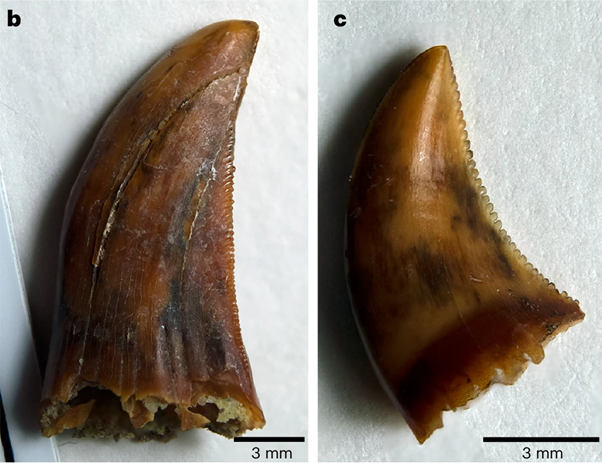Komodo dragons’ status as possibly the ultimate killing machine has been enhanced with the discovery their teeth are tipped with iron. There’s also reason to suspect predatory dinosaurs may have used the same trick, allowing them to puncture and pull prey apart with extra speed.
It’s a curious thing that arguably the closest survivor to a living tyrannosaur in body and behavior – although not genetics – exists on only a few small islands, and bits of a larger one, but there they certainly rule the roost. Komodo dragons (Varanus komodoensis), the largest living lizard, have a kill rate when hunting that puts any other vertebrate to shame. They also have more hidden weapons than a ninja in a Hollywood action film.
Already known for serrated, curved teeth, like many theropod dinosaurs, a new study shows the tips and cutting edges are enriched in iron. This explains how their teeth remain capable of pulling prey apart despite an enamel coating much thinner than in mammals.
Komodos are not unique in strengthening their teeth with the addition of the metal. Chitons like Cryptochiton stelleri, a type of mollusk nicknamed the “wandering meatloaf”, have also adopted the idea. Curiously, chitons are not terrifying predators (although the image in the previous link may haunt your nightmares). They use the iron to allow themselves to scrape their teeth on rocks to collect algae and bacteria without them wearing down too fast.
Iron is a common feature in reptilian teeth, presumably adding strength, but the concentrations are small. Puzzlingly, however, Komodo dragons and their nearest relatives are the only reptiles we’ve yet found that have taken this a stage further by concentrating the iron where it counts. The capacity to sequester iron into a discrete coating in just the right places appears to be a rare adaptation. This innovation keeps the serrated edges of dragon teeth sharper than would otherwise be possible.
The iron does make the dragons’ teeth orange, but other dragons probably think that’s sexy.
Given that the resemblance between the shape of Komodo dragons’ teeth and that of the larger predatory dinosaurs has been noted for a while, it was natural for researchers to wonder if T. rex teeth were iron-tipped too.
“Unfortunately, using the technology we have at the moment, we can’t see whether fossilised dinosaur teeth had high levels of iron or not. We think that the chemical changes which take place during the fossilisation process obscure how much iron was present to start with,” said Dr Aaron LeBlanc of King’s College London in a statement.
Nevertheless, the research was not wasted. “What we did find, though, was that larger meat-eating dinosaurs, like tyrannosaurs, did change the structure of the enamel itself on the cutting edges of their teeth. So, while Komodo dragons have altered the chemistry of their teeth, some dinosaurs altered the structure of their dental enamel to maintain a sharp cutting edge,” LeBlanc said.
Nor is LeBlanc giving up on learning whether any dinosaur teeth were iron-tipped. “With further analysis of the Komodo teeth we may be able to find other markers in the iron coating that aren’t changed during fossilisation,” he said. Some such markers might survive fossilization, providing an answer to the dinosaur question.
The team are also investigating some of Komodo dragons’ closest relatives, including some extinct giants.

The teeth of megalania, Australia’s extinct even larger relative of the Komodo dragon, show similar serrations to Komodos’, but there is no sign of the pigmentation that would indicate iron tipping.
It’s a myth that Komodo dragons’ mouths harbor lethal bacteria that accelerate sepsis in their prey. However, that doesn’t mean their size, speed, and fearsome teeth are their only weaponry. They have also been shown to have a layer of bony armor under their scales that has been compared to chain mail. Then there is their venom, which somewhat ironically could prove a lifesaver for stroke victims, and blood with powerful antibiotic capacities.
You’d think with all these powers Komodo dragons would be the global apex predator, at least in the tropics, but apparently they just don’t like moving far from home, and will return there quickly if moved. Having such a limited range means that changes to their environment have put them on the endangered species list. Teeth of iron are no good if there’s nothing to hunt.
The study is published open access in Nature Ecology and Evolution.
Source Link: Komodo Dragons' Teeth Are Iron-Tipped For Extra Bite, Raising Questions About T. Rexes